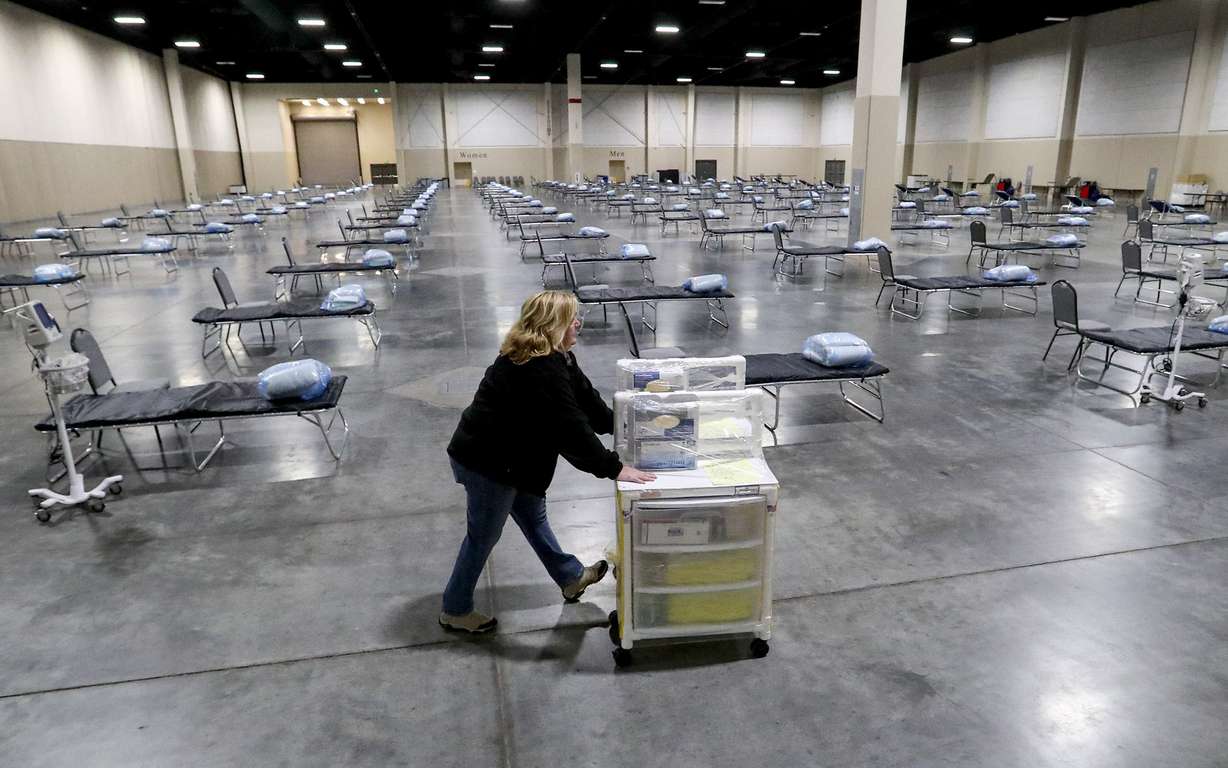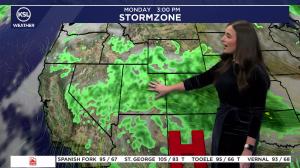Estimated read time: 5-6 minutes
- Utah has learned a lot about COVID-19 since the pandemic began.
- State epidemiologist Leisha Nolen emphasized what the state learned from the pandemic to protect lives without major disruptions.
- The Utah Health Department now tailors public health approaches and stresses collaboration and communication.
SALT LAKE CITY — Since the first case of COVID-19 was identified in Utah, 6,708,182 vaccines have been administered and about 5,750 people in the state have died from the disease.
A lot has changed in the five years since the first COVID-19 case was detected in Utah on March 6, 2020, just hours after Gov. Gary Herbert issued an emergency declaration. That was just over a week before school classrooms were empty and many employees stopped going into the office for work.
State epidemiologist Leisha Nolen said if a similar situation occurred again, health officials probably wouldn't jump into action quite as quickly — but the response would depend on the disease and how scary it is.
"The idea of shutting it down and keeping it under control, and that we'll be able to wipe it out in a few weeks — I think we realized that's not going to happen. The world is too complex to be able to have those kinds of controls on it," she said.
But Nolen said the department learned other actions through the pandemic to protect people while not shutting down businesses and letting people mostly live their normal lives.
"I feel a lot of people now are accepting that if they're sick, they just don't go do things," Nolen said.
'We learned as we went'
Nolen said one thing people realized after living through a pandemic is that diseases are not predictable. She said people would get frustrated because it seemed like the department was changing its mind or putting conflicting ideas out.
"It really was because we didn't know everything in the beginning, and we learned it as we went," she said.
She said more people are aware now of what is happening around them with public health. Before the pandemic, she said people didn't know what it meant when she said she worked in public health or as an epidemiologist — now people have more of an idea and have experience watching the trends of disease.

Data from the Utah Department of Health and Human Services shows each increase in COVID-19 cases over the last few years has been slightly less severe than the last. At its worst, there were 26 deaths related to COVID-19 in one day in Utah — on Nov. 20, 2020. The highest number of hospitalizations in one day was on Jan. 20, 2022, with 126.
Over the last winter, the highest hospitalization count from COVID-19 in one day was 16, and there are typically a few deaths a week. On Wednesday, the department reported 40 hospitalizations associated with COVID-19 in the last week and two deaths.
Nolen said COVID-19 is still a significant disease to some people and still causes hospitalizations and deaths. She said, largely, those who die from COVID-19 tend to be older adults or people with underlying medical conditions.
Different approaches
The pandemic taught the Utah Department of Health and Human Services how important it is to meet different communities in Utah where they are to share information. Nolen said the department is trying to tailor its approach to rural communities as it works with local leaders to share information about measles, which is experiencing an uptick across the country.
"I think so often we've been used to saying, 'This is what you need to do,' and expect people to do it, and now we I think the pandemic really highlighted how that doesn't work and that you really need to tailor different approaches for different groups of people," she said.
Experts at the Department of Health and Human Services can tailor advice for Utahns, noting Utah did things differently than other states because of unique risk levels for its population. Nolen said she hopes people recognize it can be a process to figure out what action is useful, and advice will change along the way.
"We really try at the Department of Health and Human Services to understand what's going to work best for our population and what's going to protect people and yet let them go on with their lives and their businesses," she said.
The department also learned more about working with others, both nationally and internationally, to understand what is happening. Nolen said Utah's health department highlighted the value of the U.S. Centers for Disease Control and Prevention, which helped states work together. She said it is a globally connected world and diseases will always come in through travel.

Sharing knowledge
COVID-19 gave the health department resources to invest in developing a good method for getting information about diseases out — specifically, the disease dashboard updated weekly by the department. Nolen said the health department is trying to use that model for other health topics people have concerns about.
"We're slowly, slowly doing it — but it takes time and money, which takes a while," she said.
The dashboard with data for COVID-19 now includes multiple respiratory diseases, adding influenza and RSV, although the URL still reflects a focus on COVID-19. It shows that this winter, influenza caused the most severe illness of the three, causing over 9% of emergency room visits at its peak. That makes it the worst influenza season since the data started being reported in 2019.
Since the COVID-19 pandemic began, 2025 is the first time RSV has caused more emergency room visits in the early months of the year than COVID-19, as COVID-19 cases have decreased. Both illnesses, however, peaked at about 1.5% of emergency room visits.
Nolen said another lasting impact of the pandemic is long-COVID, which she said has plagued a fairly large population and is a disabling condition stopping them from going about their lives.
"It's tragic hearing some of these people who are very young, very active ... and suddenly they just can't even get around their house because of the overwhelming exhaustion," she said.
Since it is still new, experts are just starting to understand the disease, how to work with patients and learn what is happening to prevent it in the future. She said new cases are not as common but can still happen even if it's not someone's first case of COVID-19.










